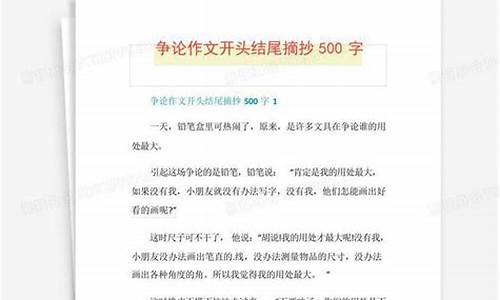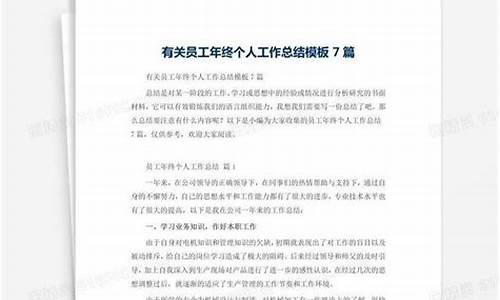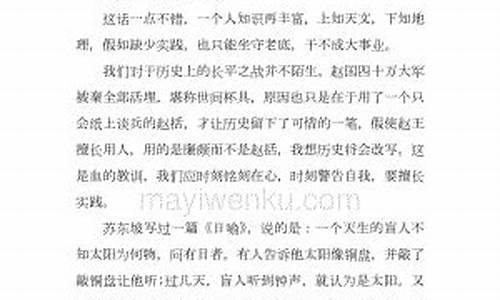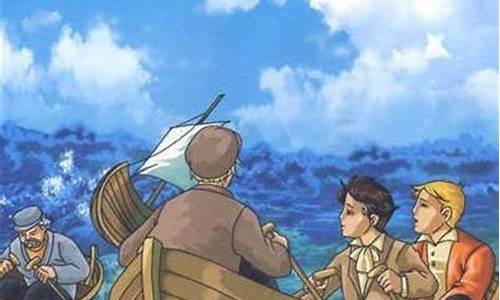定语从句教案_定语从句教案模板范文
1.高中英语定语从句教案
2.2017年仁爱版七年级上册英语教案
3.精选高中英语教案范文三篇
4.要考教师资格证的试讲了.初中英语的教案怎么写
5.中考数学答题技巧有哪些
6.‘定语从句’用英语怎么说

Module 1 Unit 2 Heroes Lesson 1 Modern Heroes
说课教案
(一) 教学内容
1. 本课是Unit 2 heroes Lesson 1 Modern Heroes 的第一课时。本单元分别介绍了National hero, History makers,Sports stars 和 Superhero。这几篇文章的主题都是hero,但涉及的领域不同,它们融会贯通,承上启下,融为一体。
2. 本课是介绍National Hero,是学生比较熟悉和感兴趣的话题,前部分需要介绍杨利伟和神州五号,让学生掌握有关词汇;后一部分是介绍杨利伟乘坐神州五号宇宙飞船遨游太空的情况。
3. 本课文出现了较多的定语从句,还有生词较多(有些单词表没有而初中又没有学过),在这样的困难前提下,我引导学生通过 culture and background knowledge,结合课本内容丰富自己的知识面,拓宽学生对航天知识的了解,让学生了解航天英雄的成功之路,激发他们的民族自豪感。
(二) 学生分析
1. 组成情况
职业高中高一学生年龄都在14-16岁之间,大多数学生由于初中的知识基础打得不扎实,而且缺乏主动学习的能动性,自学能力差,对学习没有持有探究性和方向性,也没有养成良好英语学习习惯,所以学习成绩不太理想。
2. 学生的知识与技能水平
职业高中招生的学生,基础知识比较薄弱,甚至连音标都不会读,词汇的掌握范围狭窄,影响了阅读,听力和作文。学生的表达能力还是停留在比较低级的水平,面对每幅或某个主题只能说出一两句话,而且在阅读上,未能掌握泛读和精读的技巧和方法,课后的预习和复习能力较差,缺乏总结归纳的能力。
3. 学生已掌握的学习策略
尽管学生的知识和技能水平一般,但经过了一定时间的训练后,他们还是掌握了pair work, group work, using the culture and background knowledge的阅读技巧。
(三) 教学目标
1. 通过快速阅读文章,学生能够对每段文章进行归纳总结,准确地把段落主题与所给的headings联系起来。
2. 通过仔细阅读,学生能够回答关于文章的细节问题。
3. 通过进一步阅读,学生能够学生能用英语对访自己心目中的民族英雄。并尝试复述课文。
(四) 教学策略
教学方法:使用交际法,充分调动学生的积极性,积极参与到课堂教学中,通过师生互动,小组表演的形式,完成各种任务,以达到完成教学任务的途径。
(五) 教学过程
第一步 导入
T: Good morning, Everyone! Do you like watching movies? Do you know Jet Lee (李连杰)?Do you know one of his famous movie called HERO? What does ‘hero’ mean? Who are the heroes in your heart? Do you know Yan Liwei, our national hero?
第二步 介绍文章人物
T: Open your books, and turn to page 100 and 101. Let’s read two passages about Shenzhou V and Yang Liwei.
Shenzhou V is China’s first manned spaceship. It lifted off at 9 a.m. on Wednesday, October 15th, 2003 in Jiuquan, Gansu Province. It was carrying Yang Liwei. It was launched very successfully and landed in Inner Mongolia safely.
Yang Liwei is China’s first astronaut. He was a pilot in the army. He was chosen from 1,500 other army pilots and started training for his space flight in 1998. During the 21-hour space flight, he circled the earth 14 times. When the spaceship was doing its seventh circle, Yang Liwei showed the flags of China and the United Nations, expressing the wishes of the Chinese people to explore and use space peacefully.
介绍文章时,展示文章中的生词,让学生猜测词意,带读并加以巩固。
第三步 阅读文章
(1) Fast Reading
呈现六个headings,让学生快速阅读,要求归纳每段的主题。
a. Astronaut lands safely
b. Welcome home
c. International good wished
d. An exciting lift-off
e. Introdution
f. During the flight
学生单个回答并集体讨论改正错误。
(2) Careful Reading
学生通过fast reading,完成了headings后,基本对课文有一定的了解,然后呈现出五道问题,要求学生再进行第二次阅读,对课文进行更深入的了解。
1. How did Yang Liwei feel duing the flight? How did he feel afterwards?
2. What did Yang Liwei do during the Shenzhou V’s seventh circle of the earth?
3. How many circles did the spaceship complete while Yang Liwei was sleeping?
4. What were helicopters doing as Yang Liwei returned to the earth’s atmosphere?
5. What did Yang Liwei do when he came out of the spaceship?
第四步 巩固练习
通过两次阅读让学生对课文熟悉,训练学生的阅读速度和解题技巧,最后通过ask and answer in pairs,培养学生的口语能力,并强迫他们记住文章的主要内容,为下一步语言运用打下基础。
第五步 语言运用
为提高学生对生活中的热点问题发表自己观点的能力,让学生运用自己学过的语言知识,对自己心目中的民族英雄进行模拟访。把全班同学分成若干个小组,每个小组有一名同学扮演“杨利伟”,其他同学为全国各地新闻媒体记者,他们自由设计问题,对“杨利伟”进行访。
教师巡视课堂,发现表现出色的小组,让他们到台前表演。
教师总结评价。
第六步 布置作业
让学生准备复述杨利伟的故事,要求说出自己的民族自豪感。
A Teaching Plan for Unit 3 Celebration Lesson 1 Festivals
HUANG SHUI PING
General objectives:
1.To read to learn the main Chinese seasonal festivals and their history origin and meanings.
2.To help them learn some phrasal verbs and functional items about the topic and try to use them.
Language aim:
1.Phrases:
Be celebrated by, fall on , mark, be decorated with, tradition/traditional, serve, take part in, get together
2.important sentences:
The Mid-Autumn Festival is celebrated by Chinese people.
The Lantern Festival falls on the fifth day of the first lunar month.
It marks the beginning of the hottest season of the year.
Ability aim:
1).Improving the ability of getting the general information and specific information from reading a text.
2). Using own words to describe some important Chinese festivals.
Emotion aim:
To promote students’ qualities of a patriotism(爱国主义精神,爱国心) by learning the main Chinese festivals and learn their history origin and their meanings。
Teaching important points and difficult points:
1).To get information from reading
2).To talk about festivals freely in English.
Teaching methods:
Brainstorming, task-based teaching method , heuristic teaching method , group work.
Teaching aids:
a recorder, a computer, and blackboard
Teaching procedures:
Step1. Greeting and reviewing.
Greet the class as usual.
Ask: what we can celebrate in our life? Get students to answer using the key words in warming up. eg,
Graduation, a birthday, Christmas, passing an exam, winning a scholarship, a sporting victory, the Mid-Autumn Festival, the New Year, a wedding, Halloween, the Dragon Boat Festival
Step2. Leading-in.
Show students many pictures of different seasons on the screen , asking: What’s your fourite season? Why? Help students answer using the words that they he already learned. Then ask: What festivals hen during your fourite seasons? Show more pictures about different festivals on the screen to help them to answer.
Students can work together to answer this question. Eg,
T:What is your forite season? What festivals hen during your forite season? ( he a discussion)
(S1: I liker summer. There are Children’s Day, Dragon-boat Festival and Mother’s Day.
S2: My forite season is winter. They are Spring Festival and Lantern Festival and Christmas Day.
S3: ……
T:Well done. Thank you.
Explain the differences between Day and Festival.
Step3.While-reading
Activity1.Fast-reading
Get students to read the text quickly, match the pictures with the festivals.
Activity2. Guessing.
Show some describing sentences on the screen to let students read and guess the names of the three festivals .
Activity3. Careful-reading
This time let students read the text carefully and get more detailed information to fill in the table of exercise3 on page36.
Ask some students to report their answers to the class.
Step4. Practice
Play the tape for the students to listen and ask them to fill in the blanks according the text.
1.The Mid-Autumn Festival hens in September or______. it is important because it is a special _____ for family.
2. There are many different kinds of mooncakes ____ fruit, coffee, chocolate and so on.
3. The ____ ____ Festival falls on the fifth day of the fifth month of the lunar year.
4.The Dragon boat race marks the _____ of the hottest season of the year.
5.________Festival marks the end of the Chinese New Year celebration.
Step5. Post-reading.
Let students discuss with a partner and answer the following question.
Which festival in China is most important for children? Young people? Old people? Women and men?
Then ask some students to give a report.
Step6. Homework.
1. do the exercise 9 on Page 37
2. remember the new words in Lesson One.
3. use your own words to describe a festival that you are familiar with.
Step7. Blackboard design.
Lesson 1 Festivals
The Mid-Autumn Festival is celebrated by Chinese people.
The Lantern Festival falls on the fifth day of the first lunar month.
It marks the beginning of the hottest season of the year.
高中英语定语从句教案
英语被最多国家作为官方语言,也是实际上的国际语言,相对于我们的母语中文,学习英语对于学生来说相对有难度,那么作为一名英语教师,该怎样去说课,又有哪些要求呢?下面我为您带来英语说课的基本步骤和要求,欢迎大家阅读。
英语说课的基本步骤(一) 说教材
1.说教材的地位和作用
简要分析本课内容在单元整体教学中和整个教材体系中甚至在素质教育英语教学中的重要地位。
对话课是单元整体教学的重要环节。作为单元的第一课,对话课的作用首先是为第二、三课提供话题和语境。由于整个单元都是围绕一个话题操练特定的功能项目,对话课又具有为二、三课的学习扫清语言和文化障碍的作用。
例子:
本课对话内容紧紧围绕体育运动话题展开,谈论运动项目必定使人联想到奥运会、奥运历史、奥运精神等,这就为下一课阅读教学提供了话题和语境。本课操练的功能项目是表达个人喜好的句型"prefer...to",学习并熟练掌握该句型有助于学生能就"prefer A to B”表达自己对运动项目的爱好及爱好程度。
从素质教育的要求和学习语言的目的看,高中英语教学重视培养学生运用英语进行交际的能力。根据英语课程标准的要求,对话课应侧重培养学生的口语表达能力,体现英语教学的交际性、得体性、准确性和实践性。因此,本节对话课教学应着重培养学生熟练运用所学功能用语谈论体育话题的能力,为进一步自由谈论奥运历史打下基础。
2. 说教学目标的确立及其依据。
1)知识技能
(1) 学习、掌握关系副词when,where.,why 引导的定语从句及介词+关系代词引导的定语从句。
(2) 学习掌握一些有关的词汇:
如: career, director, script, play a role in ,Oscar, award, studio, scene, follow-ups等。
掌握其他一些课文中涉及的词汇:
如:graduate, attack, creature, owe…to…, take off等。
(3) 学习掌握一些用于讨论、评价**的结构句式:
如:What’s the film about?
What do you think about the story of the film?
How do you feel about the film?
I like / don’t like the film because…
The film is about… I think the ending of the film is …
(4) 提高学生语言听、说、读、写的能力及扮演角色、编写剧本、撰写影评等的综合语言运用能力。
2) 情感态度
(1) 学习几位著名影星、导演执著于艺术、献身于艺术的敬业精神和对人类艺术的巨大贡献。
(2) 从Keanu Reeves 艰辛的成功途中(In the begin did many small jobs, then played in many cheap films.)我们可以学习到:要成就事业需付出辛勤劳动,要有持之以恒、坚持不懈的恒心与毅力。
(3) 通过学习国外著名界人物,培养学生了解、尊重异国文化,体现国际合作精神。
(4) 通过开展小组活动,指导学生积极与人合作,相互学习,相互帮助,培养其团队精神。
3)学习策略
(1) 认知策略
能总结定语从句的结构规律,并加以应用;在学习中借助**海报图画、图表等非语言信息进行理解或表达。
(2) 调控策略
利用,主动拓宽英语学习渠道,创造和把握学习英语的机会;积极参与访、表演、调查等英语学习活动。
(3) 交际策略
充分利用访、表演等真实交际活动提高用英语交际的能力,在其过程中能借助手势、表情等非语言手段提高交际效果,能克服语言障碍,维持交际。
(4) 策略
通过了解知识,获得更广泛的英语信息,拓展所学知识。
4) 文化意识
(1) 了解英语国家界艺术家的成长经历、成就和贡献。
(2) 通过学习,了解世界著名文化,培养世界意识。
(3) 通过中外文化对比,加深对中国文化的理解。
3.说重点、难点和关键点的确立及其依据。
列举该课重点、难点和关键点的同时,说明为什么该重点是本课教学的最主要部分或最重要内容,为什么该难点在本课教学中是学生最难理解和最容易出现错误的部分(有时重点和难点相同),为什么该关键点对本课教学的成败起决定性的作用。
重点和难点均是“现在完成时的基本结构和用法”。
重要性:现在完成时态是课程标准要求学生掌握的重要时态之一,本课是该项语法教学的第一课,要对学生进行正确的语言输入,为以后的教学打下坚实的基础。
难点:由于英汉两种语言对“完成”和“过去”概念定义的差异,学生往往对现在完成时、一般过去时的含义和用法产生混淆,动词的过去式和过去分词的使用也容易出现错误,因此,“现在完成时的基本结构和用法”既是本课教学的重点,又是本课教学的难点。现在完成时的动作发生。
(二)说教法
SEFC Bl L37(对话课)为例:
对话课重在培养学生的口语表达能力。因此选择使用交际教学法在具体教学中以情景教学为主,活动教学为辅,充分利用直观教具和电化教学手段创设情景,利用、投影仪、录音机等设备,培养学生直接用英语理解、表达和思维的能力。在具体教学过程中贯彻交际教学原则,用3P教学模式,组织各种课堂活动,如表演猜谜、演讲(I prefer A to B because...)、讨论(Which sport do Chinese people prefer?)等,培养和强化学生的语言实践能力和自主学习能力。
(三)说学法及学法指导
说学法,要结合课堂教学内容,说出在本课教学过程中,指导学生学习使用或学会使用什么学习方法,如五官并用、强化记忆、比较归纳、分析概括规律、循环记忆、分类记忆、联想记忆、发现学习等等。要说明结合本课教学培养学生哪种学习能力,如观察力、记忆力、想像力、注意力、创造力、思维能力、反应能力、自学能力等。
(四)说教学程序
说教学程序,要简要说出该课的各个教学步骤的具体教学环节名称及相关教学内容、步骤、教学活动组织和安排;即在哪个教学环节教哪个(些)知识点,提出哪些问题,做哪些练习(教什么),组织哪些课堂教学活动,用什么教学方法(怎么教)等等。
在叙述教学程序时,要按照教学步骤说清各个教学环节的具体活动,包括讲授的知识内容、练习、小结、反馈、矫正及作业布置等安排。
说教学程序要求既有具体步骤的安排,又要有针对性的教法理论阐述。
此部分的关键在于让学生了解如何制作**,尤其是通过了解**的制作而突出导演的重要作用。
Task: To experience being a director (write one scene of the film and act it out).
活动形式
1.头脑风暴:教师提问If you want to make a film, who do you need to invite?通过此问题引出**制作过程中所需的各种角色,如photographer, actor/actress, editor, director等等。
让学生讨论各角色在**制作中所做的不同工作。通过讨论,学生不难发现,在**的制作过程中,导演起了非常关键的作用。
2.小组活动:
分别给出阅读材料中提到的五幅**(Jaws, E.T., Jurassic Park, Schindler’s List, Sing Private Ryan)的,把学生分成不同的小组,对进行预测,各个小组根据不同的猜想影片的大概内容及主题。
While-reading
First reading: 快速阅读课文的Para3-5 , 查找出有关这5部**内容和主题的信息,并核对与自己猜想是否相符。
Second reading: 阅读并查找有关Spielberg的信息:
1) When and where was he born?
2) When did he start making films?
3) What did he use to make films at first? and later?
4)What was his dream?
Fill in the blanks (diagram)
Deal with the words
Retell the text with some key words
Discussion
(五)说极书设计
说板书设计要求语言精练,说明板书的整体布局即可。
英语说课的基本要求说课有别于讲课。讲课的对象是学生,侧重讲授知识、培养能力、教书育人,是系统的教育教学活动;而说课的对象是教师、教研员、评委,侧重表述如何讲授知识、培养能力、教书育人,是系统的教育教学研究活动。说课是教学与教研的结晶,是教学理论和教学实践结合的产物。说课讲稿的撰写要注意以下几点。
(一)突出理论性
说课讲稿有别于教案或教案提要,它比教案更具有理论性。写说课讲稿也不同于写教案,教案多是具体教学过程,而说课稿则侧重于有针对性的理论指导的阐述;教案只说"怎么教",而说课讲稿则要重点说清“为什么这么教"。因此,写说课讲稿要注重理论依据的阐述,尤其是说教材、说教法、说学法及学法指导时,一定要说明其理论依据。
(二)简明扼要
说课稿有别于教学论文,它比教学论文更具实践性,因此。说课稿的撰写要用词精当,切忌长篇大论、面面俱到或泛泛而谈。说课各个要素及其理论依据必须要有直接的内在联系,在语言表达方面要言简意赅。另外,表述具体的教学目标时,要尽量避免使用抽象、笼统、缺乏可操作性和可监测性的一般性用语,如知识目标一Student will learn about the present perfect tense;能力目标一Improve the students' abilities of listening,speaking, reading and writing。这样的教学目标只是泛泛而谈,没有说明要求学生做到的是什么,教师在教学过程中也无法有效操作,听课者更难确定教学目标是否达成。
(三)不拘一格
由于教学内容不同,教学对象(学生)不同,课型不同,教师的教学经验以及对教材的理解和处理不同,说课稿的撰写也不应拘泥于单一的、固定的模式。只要教师能够准确把握说课的要素和要点,透彻分析教学设计的理论依据,用综合论述(说课的各个要素不逐项列出)或分块论述(说课钠各个要素逐条列出),都能达到说课教研的最终目的。
(四)突出英语学科特点,但要量力而行
原则上讲,英语说课讲稿最好用英语写。但是用英语写说课讲稿对教师的英语写作能力提出了更高的要求,因此,在有些教师还没有掌握说课方法或没有能力准确翻译某些教学理论时,最好慎重用英语写说课讲稿。笔者认为,现阶段英语说课讲稿用英语撰写或用汉语撰写均可。因为,说课是陈述教学方案设计及其理论依据,而不是具体实施课堂教学方案。英语说课的目的主要是进行英语教学研究,提高教师的教研水平,而不侧重于提高教师的英语口语表达能力。
2017年仁爱版七年级上册英语教案
定语从句,一个简单句跟在一名词或代词后(先行词)进行修饰限定,就叫做定语从句。以下是专门为你收集整理的高中英语定语从句教案,供参考阅读!
高中英语定语从句教案Ⅰ. 定义
定语从句,起形容词的作用,在句中常用来修饰名词或代词。被修饰的.词称为先行词,引导定语从句的词称为关系词, 关系词的作用一是放在先行词与定语从句中间起引导作用;二是在意义上代替先行词,并在从句中充当一个成分。其中关系代词:who, whom, whose, which, that, as;关系副词:when, where, why。
eg. She is the girl who sings best of all.
The pen which my uncle ge me is missing.
He lives in a house whose windows face south.
The factory where my father works is in the east of the city.
Perhaps the day will come when people will be able to breathe clean air in cities.
Ⅱ. 关系代词
1.先行词是人,作主语,关系代词用who, that
eg. He is a man( ) never lees today’s work till tomorrow.
The boy ( ) is standing there is my cousin.
2. 先行词是人,作宾语,关系代词用 whom, who, that,
eg. Here is the man ( ) you’ve been expecting to meet.
The man ( ) you met yesterday is Mr. Smith.
3. 先行词是物,作主语,关系代词用which, that
eg . The train ( ) has just left is for Guangzhou.
Children like to read books ( ) he wonderful pictures.
4. 先行词是物,作宾语,关系代词用which, that,或省略
eg. The book ( ) you borrowed yesterday is really interesting.
The pen ( ) my uncle ge me is missing.
5. 先行词是人、物,作定语,关系代词用whose
eg. He is the professor ( ) name was Jackson.
China, ( ) population is the largest in the world, is developing very fast.
Ⅲ. 关系副词
1.先行词是表示时间的名词,在定从中作时间状语,关系代词用when
eg. I can’t remember the date ( ) he went abroad.
I’ll never forget the day ( ) I joined the army.
2.先行词是表示地点的名词,在定从中作地点状语,关系代词用where; 其中注意表示抽象概念的地点名词,如,situation、stage、degree、point等表示方面或程度时,也需用where
eg. This is the village ( ) Uncle Wang once lived.
They he reached the point ( ) they he to separate with each other.
He’s got himself into a dangerous situation ( ) he is likely to lose control over the plane.
3. 先行词是reason,在定从中作原因状语,关系代词用why
eg. I don’t know the reason ( ) he was late.
None of us know the reason ( ) Tom was absent from the meeting.
4.引导定语从句的关系副词也可以用“适当介词 + which”来代替。
eg. October 1, 1949 was the day when ( = ) the People’s Republic of China was founded.
This is the factory where(= ) we worked a year ago.
I don’t believe the reason why (= ) he was late for school.
Ⅳ. 关系代词that & which的区别:
⒈ 只用that的情况
① 先行词为all, everything, anything, nothing, little, much等不定代词时。
eg. There is nothing ( ) can prevent him from doing it.
② 先行词被any, only, few, no, very, little 等修饰时。
eg. This is the very book ( ) I’m looking for.
③ 先行词被形容词最高级或序数词修饰时。
eg. The first place ( ) they visited in Guilin was Elephant Trunk Hill.
This is the best film ( ) I he ever seen.
④ 先行词既有人又有物时。
eg. He talked about things and persons ( ) they remembered in the school.
⑤ 先行词被the only, the very修饰时。
eg. Mr. Smith is the only foreigner ( ) he knows.
⑥ 句中已有who或which,为了避免重复时。
eg. Who is the man ( ) is standing beside Tom?
⒉ 不能用 that的情况:
① 引导非限制性定语从句;
eg. He had failed in the maths exam , ( ) made his father very angry.
② 介词 + 关系代词。
eg. This is the room in( ) my father lived last year.
Ⅴ. as引导定语从句时的用法(as 相当于that & which)
① as引导限制性定语从句通常用于the same … as, such … as结构中。
eg. This is the same book ( ) I lent you.
Such machines ( ) are used in our workshop are made in China.
② as引导非限制性定语从句既可放在主句之前,也可放在主句之后,位置灵活,用来修饰整个句子。通常用下列句型:as is known to all, as is said, as is reported, as is announced, as we all know, as I expect 等。
eg. ( ) I expected, he got the first place again in this mid-term examination.
Taiwan, ( ) we all know, belongs to China.
Ⅵ. 限制性定语从句和非限制性定语从句的主要区别:
限制性定语从句: 一般紧跟在先行词后面,不用逗号把从句与先行词分隔开来。使先行词的意思十分明确,成为特定的人或物,是句子中不可缺少的成分,少了它句子就会失去意义不能成立,或意思不清楚,不能说明问题。通常译为定语。
非限制性定语从句: 通常由逗号与句子其他成分隔开。只是对先行词作进一步的说明,没有它句子仍能成立,意思仍很清楚。通常译为并列的句子。
eg. I was the only person in our office ( ) was invited.(去掉定语从句,意思就不完整)
Tom’s father, ( ) is over sixty, still works hard day and night.(整个句子可分成两句来翻译)
Ⅶ. 分隔定语从句
即先行词与关系代词、副词之间被介词短语,同位语,谓语等分隔开来。
此种定语从句,在选择关系词时,要注意找准先行词。
eg. There is an expression in his eyes ( )I can’t understand.
I was the only person in my office ( ) was invited to the important ball.
I suggest you choose someone I think ( ) is very kind and friendly.
选择填空:
1. It was April 29,2011 Prince William and Kate Middleton walked into the palace hall of the wedding ceremony.
A. that B. when C. since D. before
2.)Gutter oil is illegally recycled cooking oil, contains chemicals that are harmful to the human body and can even cause cancer.
A. it B. which C. where D. that
3. Between the two parts of the concert is an interval, the audience can buy ice-cream.
A. when B. where C. that D. which
4. The old town has narrow streets and small houses are built close to each other.
A. they B. where C. what D. that
5. Whatever is left over may be put into the refrigerator, it will keep for two or three weeks.
A. when B. which C. where D. while
6. English is a language shared by several diverse cultures, each of ------- uses it somewhat differently.
A. which B. what C. them D. those
7. A bank is the place they lend you an umbrella in fair weather and ask for it back when it begins to rain.
A. when B. that C. where D. there
8. She has a gift for creating an atmosphere for her students ------ allows them to communicate freely with each other.
A. which B. where C. what D. who
9 Ted came for the weekend wearing only some shorts and a T-shirt, ------ is a stupid thing to do in such weather.
A. this B. that C. what D. which
10. She showed the visitors around the museum, the construction ------ had taken more than three years.
A. for which B. with which C. of which D. to which
11. The school shop, customers are mainly students, is closed for the holidays.
A. which B. whose C. when D. where
12.He was so pleased with all we had done for him he wrote us a letter to praise for it.
A. what; what B. what; that C. that; what D. that; that
13.The moon trels round the earth once every month, is known to everybody.
A. it B. as C. that D. what
14. is often the case with elder people, my grandma, talked about my new hairstyle for at least 50 minutes nonstop.
A. That B. Which C. As D. It
15.After graduating from high school, you will reach a point in your life ------- you need to decide what to do.
A. that B. what C. which D. where
16.The novel was completed in 18, the economic system has seen great changes.
A. when B. during which C. since thenD. since when
17.Books bring us into the presence of the greatest minds he ever lived.
A. which B. who C.不填 D. that
18.The world is made up of matter.
A. in that we live B. on which we live
C. where we live in D. we live in
19.Did is such a good boy all the teachers like.
A. that B. who C. as D. whom
20.Is this the reason at the meeting for his carelessness in his work?
A. he explained B. what he explained
C. how he explained D. why he explained
21.He was very angry and I can still remember the way he spoke to me.
A. how B. that C. what D. which
22.That’s the new machine parts are too small to be seen.
A. that B. which C. whose D. what
23.I’ve become good friends with several of the students in my school ------- I met in the English speech contest last year.
A. who B. where C. when D. which
精选高中英语教案范文三篇
仁爱版七年级上册英语教案作为英语教师对课堂教学的一种预计和构想,在教学中占有十分重要的地位。下面是我为大家精心整理的仁爱版七年级上册英语教案,仅供参考。
七年级上册英语教案
Teaching Plan
Background information(背景知识):
Students: 52 Middle School students
Lesson duration: 45mins
Teaching contents(教学内容): Unit 2 Topic 1 I he a small nose. Section A
Teaching aims(教学目标):
1. Learn some new words:
(1)Learn words about parts of the head:
nose, eye, head, face, hair, ear, mouth, neck
(2)Learn some other new words:
guess, know, wide, right, girl, boy, he, has, small, big, round, short, long,
2. Learn some useful sentences:
(1) I/You/We/They he?
(2) She/He/It has?
(3)---Do you he?
---Yes, I/We do. No, I/We don?t.
(4)--- I know.
--- You?re right.
3. Learn how to describe people?s earances.
Teaching focus(重点):words about parts of the head and adjectives of description
Teaching difficulties(难点):The usages of he and has
Teaching procedures:(教学步骤)
Step1 Warm-up 第一步 热身
greeting
sing a song : Head and shoulders.
Step2 Review 第二步 复习
(1) 通过复习,培养学生根据卡片信息进行简单交流的能力。
(出示卡片上文字信息,师生进行互动问答。复习描述人的基本情况。)
Name: Jane
Age: 11
From: Canada
School: Beijing International School
Class: Nine
Grade: Seven
Phone number: (010)9267-6929
(1)T: What?s her name S1: Her name is Jane.
T: How old is she S2: She is eleven.
T: Where is she from S3: She is from Canada.
(2)(根据图画导入新内容。)
Step 3 Presentation 第三步 呈现
利用 简笔画 教授人体部位的名称,并在的相应位置板书单词,然后领学生拼读。
(2)(利用卡片,操练表示人体部位的名词。)
T: Let?s look at this picture. What?s this S1, please. S1: Eyes.
T: How do you spell it, please S1: E-Y-E-S,eyes.
(以同样方式操练其他表示人体部位的名词。)
T: Nice work, boys and girls. (教学boy and girl)
(3) 通过对比学习描写人体头部的形容词(long hair, big eyes, small eyes, a round face?)
(4) (出示2a的教学挂图,让学生观察中突出的外貌特征,巩固表示人体部位的名词和部分形容词。)
T: OK, now look at these pictures. Let?s talk about their different looks. Is this a big nose
Ss: Yes. It?s big.
T: Good. He has a big nose. Are they big, too Ss: No. T: Very good. They are not big. They are small. They he small noses and small eyes.
(以同样方式操练其他四幅。)
(5) (在熟练掌握人体部位和描述人体部位形容词的基础上,结合2a的教学,让学生操练形容词+人体部位的 短语 ,然后教授he和has的用法,进而过渡到完整的 句子 。)
① he: S(I/We/You/They) +he ?
② has: S(He/ She/ It)+has ?
Step 4 Consolidation 第四步 巩固
1. (小组竞赛。限定时间要求学生书面完成2b。核对答案,并让学生复述he/has的用法,最后让学生齐读这七个句子。)
2. (接龙游戏。教师根据自己的实际情况以第一人称说一个句子,学生模仿练习。)
S1: I he a small nose.
S2: I he a long face.
S3: I he a big head.
S4: ?
?
Step 5 Practice 第五步 练习
完成1a,1b进一步帮助学生巩固本课的功能项目,培养学生的听说能力。
Sing a song
Step 6 Summary 第六步 总结
Summarize the new words.
Summarize the grammar.
Summarize the useful expression
Step 7 Homework 第七步 作业
(1) 预习Section B 的生词
(2) 描述一位朋友的外貌。
七年级上册英语知识点
一、48个国际音标及26个英文字母的正确书写
要熟练掌握元音和辅音,5个元音字母(a, e, i, o, u),字母的正确占格及单词间距。
二、be动词的用法
be动词有三种变形,分别是:am, is, are。记忆口诀:
?我?用am, ?你?用are, is用于?他、她、它?;单数全都用is,复数全部都用are。
七年级英语 定语从句辨析
[误]I won't tell you the name of the person who teach me English.
[正]I won't tell you the name of the person who teaches me English.
[析]在定语从句中,关系代词作主语时,从它本身看不出其数的形式,这时要由它的先行词决定。这里who 应由 the person 单数决定,应该用单数谓语动词。又如:I who am a student want to find a spare time job. 这里的 who 应与 I 是一致的,所以其谓语动词应该用am。
[误]We talked about the things and the people who we met during the Second World War.
[正]We talked about the things and the people that we met during the Second World War.
[析]这里的关系代词不要用 who,因为其先行词有两个一个是 things (物),而另一个是people (人),这时既不可用 who,又不可用 which,因前者只能用于先行词是人的情况下,而后者则用于先行词是物的情况下,所以只能用 that,因为它的先行词既可以是人又可以是物。
[误]The book,that I bought yesterday,was very good.
[正]The book,which I bought yesterday,was very good.
[析]先行词与定语从句被逗号分割开来时,即作为非限制性定语从句。在非限制性定语从句中 which,when,who,whom,where,when,whose 等都可以和限制性定语从句中的作用一样,而独有 that 不易用于非限制性定语从句。
[误]The dictionary which I lent it yesterday is a very useful tool.
[正]The dictionary which I lent yesterday is a very useful tool.
[析]关系代词在定语从句中是要起语法作用的,它不是作主语就是作宾语。虽然在作宾语时它的位置由原来的宾语位置移到了句首,但它的作用依然存在,而且在原宾语位置上不能再出现宾语。
[误]The teacher I want to learn English from is the one which comes from America.
[正]The teacher I want to learn English from is the one who comes from America.
[析]the one,anyone,those 作代词并且是指某人、物时,其关系代词不能用 which 应用 who。
[误]This is the room in that the old man lives.
[正]This is the room in which the old man lives.
[正]This is the room which the old man lives in.
[正]This is the room that the old man lives in.
[析]that 不能紧跟在介词后作介词宾语,但如果介词不前置仍放于句尾,则可用 that 作引导词,而且可以省略。如: This is the room the old man lives in.
猜你喜欢:
1. 仁爱英语七年级上教案
2. 仁爱7年级英语上册单词
3. 仁爱版七年级英语教案设计
4. 2017七年级上英语教案
5. 七年级上册英语教案全册
6. 七年级上册英语全册教案
7. 7年级英语上册教案
要考教师资格证的试讲了.初中英语的教案怎么写
通过课文的学习,引导学生懂得任何一件事物都得付出很多的劳动,懂得爱惜报纸,爱惜各种书籍。以下是我为您整理的精选高中英语教案范文三篇,供您参考,更多详细内容请点击教案栏目查看。
篇一:教学目标
1) Important vocabularies
Daily; advertisement; check interview; fix; develop; hand; add; deliver; speed; latest; publish; oid; besides; get down to ; face-to face; be popular with somebody; as well; care for
2)Daily expressions
Are you /Will you be free then?
Yes, I'd be fee. I'd like to go.
Let's go together then. I'll meet you at the theatre at six - thirty .
Good! See you then.
What time shall we meet?
Where is the best place to meet?
What about meeting outside? I suggest…
3) Useful phases
What's on…? Is there anything good on?
They are said to be very good.
Finally, there is no more time left for adding new stories.
4) Grammar
V.-ing Form is used to be Subject and Object
教学建议
能力训练
1.通过口头练习,学会日常生活中的各种表达方式。
2.学会介绍事物及报刊杂志的方法,了解这种文体的写作技巧。
德育渗透
1.通过课文的学习,引导学生懂得任何一件事物都得付出很多的劳动,懂得爱惜报纸,爱惜各种书籍。
2.通过对报纸各版面的介绍,扩大了同学们的眼界,增强了他们求知欲和学习积极性。
师生互动活动
Lesson 13:口头练习:对话交际功能——日常生活用语。
Lesson 14:学生扮演主编介绍报纸出版的过程。
Lesson 15:学生扮演主编介绍《中国日报》的内容。
Lesson 16:笔头练习:写一篇介绍一种报纸或杂志的英语论文。
教材分析
从本单元的对话来看,主要是学习如何用英语提出约会以及如何应答约会的日常用语,如:询问对方是否有空,建议会面时间和地点及如何应答的日常用语,并能运用Will you be free?到It’s.. What about…?等最为普通的语言功能进行日常交际, 同时也注重check, fix, face-to face, deliver, take a photograph, pass on, get down to, as well, what’s on 等重点词汇和短语在本单元中学习,本单元中的阅读课主要内容是了解报社一天的工作和报纸的出版过程及《中国日报》的一些情况,同时在这里运用了重点语法知识,V.-ing形式充当主语和宾语的用法。
重点知识讲解
1.Sure, go ahead.行,请便吧!
1)Sure这里作副词,表示肯定(=Surely,Certainly,Of course)
2)Go ahead有下列几种常用的用法:
A.(用于祈使句)尽管去做
—May I use your dictionary? 我可以用你的词典吗?
— Yes, go ahead.行,你尽管问吧!
B.继续做(某事) go ahead with sth.
Don't stop. Just go ahead with your work.不要停下来。只管干你们的活。
C.领先;先走一步。
You go ahead and tell them we're coming.你先走一步,告诉他们我们就来。
D.取得进展;有进步。
The modem agriculture and industry are going ahead rapidly. 现代工农业正在迅猛发展。
2.They’re said to be very good.据说他们都很不错。
不定式“to be very good作主语补足语,说明主语的情况。全句相当于It is said that they are very good 或 People say (that) they are very good。
这类句子在转换时,要注意不定式的形式变化。
(1) It is said that he is translating the book into English. = He is said to be translating the book into English.
(2) It is said that he has translated the book into English. = He is said to he translated the book into English.
3.Cover the events 访这些。
cove vt.1)对……进行新闻访
All the reporters want to cover the important events as soon as possible.所有的记者都想尽快地对这些重大进行访。
2)覆盖
You can put out the fire by covering it with a wet quilt.用一条湿棉被把火盖住,就可以把火扑灭。
3)行程为……;走……
By sunset, we had covered thirty miles. 日落的时候,我已走了三十英里。
4.…fix a time for a face- to- face interview with them. 约定时间同他们进行面对面的访。
1)fix v.
A. agree on; arrange 约定;安排;商定
We’ve fixed the date for the meeting.我们以约定了会议的日期。
B.repair修理
She is fixing a shelf to the wall.她正把一个架子固定在墙上。
fix one's eyes on:用(眼睛等)盯住
fix one’s attention on 把(注意力)集中在……
He stood there, his attention fixed on the notice on the wall.他站在那儿,集中注意力在看墙上的布告。
2)face-to-face
A.adj.面对面(作定语)
face-to-face argument面对面的争论 类似的短语:
heart-to-heart;交心的 hand-to-hand短兵相接的
B.面对面地
face to face with sth. /sb.面对面看……(作状语);类似的短语:
shoulder to shoulder;heart to heart;hand in hand; arm in arm
5.They go to the newspaper's own library to look up any information that they need.他们到报社自己的图书馆去查阅他们需要的资料。
(1)that they need定语从句,修饰先行词information。关系代词只用that而不用which,因为当先行词之前有不定代词all,any,every,no,some等修饰时或先行词本身就是不定代词(如anything,something,nothing,all等)时,其后的定语从句常用关系代词引导。如果that在定语从句中作宾语,that可以省略。
He you got any book that interests you much? 你有没有使你感兴趣的书?
2)look up
A.查阅;查找
If there are words you don't understand, look them up in the dictionary.如果有不认识的词,就查字典。
注意:“查字典”应为look sth up in the dictionary而不能说look up the dictionary.
B.看望
Don't forget to look me up when you come to Beijing.到了北京别忘了来看我。
6.work at, work on的区别
work on sth.中sth.是work的具体对象,work at sth.中sth.只说明所从事工作的性质(即时间、精力用在某一方面的事情上),而不在于说明正在做什么。如:
When the boy saw the soldiers, he stopped working on the branch, stood up, and took off his cap. 小男孩看到了这些士兵,便停止了削树枝,站了起来,取下帽子。(树枝是具体的对象)
work on还表示“继续工作”“努力影响或努力说服”。
Can you work on him to make him change his mind? 你能努力说服他改变主意吗?
篇二:教学目标
本单元对话课复习了有关问路及应答用语,要求学生用所学语言自编对话描述所在学校、区域或城市;
本单元介绍了美国的迪斯尼乐园及其创始人Walt Disney艰苦创业的生活经历。通过本单元教学,要求学生掌握迪斯尼乐园的概况,并可根据提示复述沃尔特?迪斯尼奋斗的生活简历。引导学生意识到只有通过自身的努力,艰苦奋斗,才能收获成功的道理。同时,设计问答练习,提高学生阅读能力。
作为高二的起始单元,此处复习了宾语从句的用法,通过课文阅读,完成练习册后练习,学生需熟练掌握此语言项目,并准确运用到口头及书面表达中。
对话教学建议
Step 1听录音
教师放对话录音,放完两遍之后,教师根据对话内容提出一些问题。
1.What were they talking about ?
2.How to answer the first /second/third/forth/fifth visitor question?
Step 2 练习
组织学生五个人一组,练习对话三至五分钟。教师请几组同学到前面表演。
Step 3改写
将对话内容改写为一篇短文,要求学生用本课的地点名称如:
Sleeping Beauty Castle , Bear Country, Horse-drawn streetcars, the Tomorrow Land Building
比如:Carl is answering visitors’ questions. The first visitor asks Carl the way to the Sleeping Beauty Castle….
Step 4 讨论
If you are visitor, How to ask the way to the stranger at first?
Step 5总结
教师提问学生们,归纳和总结对话用语。
Asking:
Where is …...
How can I get to…
Which is the way to…
Could you tell me if…
Could you tell me the way to…
Answering:
Go straight ahead…
It’s behind …/in frond of/
Go down this street…
教材分析
本课的日常用语用语是有关对话asking the way and responses,这样的问路用语在初中都以学过,所以对话不在是个难点。本课的两篇阅读文章是有关人物,沃尔特·迪斯尼。难点在于第一篇是了解他的生活经历和艰苦创业。第二篇是我们众所周知的Disneyland,两篇文章结合着学过的语法知识宾语从句在里面,这也不是学生们所要了解的重点。
篇三:教学目标
Teaching aims
通过本单元的教学,学生了解有关急救的常识,在生活中如何处理一些突发,然后实施紧急救护等总结,归纳情态动词的用法,如:should/shouldn’t; must/mustn’t ;ought to等表示义务和责任的用法。
Teaching important and difficult points
1.Words
knee, still, bite (bit, bitten/bit), lay (laid, laid), mouth-to-mouth, bum, cut, electric, container pool, breathe, within, handkerchief, wound, safety, wire, guard, sideway, firm, firmly wherever, stomach, injure, injured, injury, poison, quantity, nearby
2.Phrases
first aid, ought to, medical care, by mistake, pay attention to, in a short while, deal with, take it easy, running water, out of one’s reach, throw up, hold up
3. Useful expressions
We must carry her to the side of the road.
You mustn’t move someone if they are badly hurt.
Parents should know some first aid.
You shouldn’t get up if you are badly hurt.
I ought to go home.
I he to cook supper for my grandmother.
4. Grammar
Revise Modal Verbs : must, should
Study Modal Verb: ought to
教学建议
课文建议
教师安排中国学习联盟声朗读课文,理解课文含义,通过阅读,教师对学生可小组讨论,提问,口语练习,复述急救方法等,教师给学生展示几组,帮助学生学会一般的急救措施和家庭安全常识。
写作建议
教师布置学生写作的题目及要求,教师给学生几分钟时间进行讨论,教师给学生一些关键的词语,如:breathe, First Aid Centre, handkerchief, mouth-to mouth so on.之后,教师给学生十分钟左右时间开始写,最后教师请几位同学朗读,教师给予讲评。
教材分析
本单元是围绕First aid, Safety in the home,展开话题。对话课中描述两个学生在街上看到一个女孩从自行车上摔下来的经过,同时对话中使用了情态动词的用法,课文中附有和口语练习,帮助学生了解急救的重要性及有关的常识。
重点难点:
1. What should you do if a person has drunk poison by mistake? 如有人误喝了毒药,你怎么办?
by mistake是固定词组,意为“错误地”,“无心地(做错了事)”。例如:
She put salt in her cup of coffee by mistake.她错将盐放入咖啡里了。
2. do with,deal with
二者都可以用来表示“处理”的意思
但是用于特殊疑问句的时候do with与what连用;deal with则与how连用。例如:
你会怎样处理一个从自行车上摔倒而严重受伤的?
另外,do with还可表达别的意思。例如:
What did you do with my umbrella? (=Where did you put my umbrella?)
你把我的伞放到哪里去了?
What are we to do with this naughty boy? (=How are we to deal with this naughty boy?) 我们该怎样处置这个顽皮的男孩?
3. knock at, knock down & knock into的区别
knock at 指“敲打门窗”
I heard someone knocking at the door.我听见有人敲门。
Tom tried knocking at the window.汤姆试着敲了敲窗户。
knock down 指“……撞倒”
He nearly knocked me down at the corner.在拐角处,他几乎把我撞倒。
He was knocked down by a car. 他被汽车撞倒了。
knock into 指“碰倒,撞上某人”,也可指“偶然碰见”。
The child knocked into the teacher.那孩子撞到了老师身上。
He knocked into the chair in the dark.黑暗中他撞在了椅子上。
He didn't expect to knock into some of his friends here.他没有想到在这儿遇见一些朋友。
中考数学答题技巧有哪些
基本信息:学生背景,内容(重难点),目标,教学理念,教具等;
lead in-3p:presentation, practice, production;?作业;
教学反思。
第一,在候考室,抽取的试讲题目统一是由教育部考试中心研制的面试测评系统提供,考生在电脑上抽取题目,考题由电脑直接打印。实践证明,很多题目是固定的,重复出现的。
第二,备考室里提供一张备课纸,因为20分钟并不会写太多的教案内容。
第三,考场里的20分钟,分为三个考试环节。5分钟结构化答辩+10分钟试讲+5分钟试讲答辩。其中结构化答辩2道题目,是考官现场读题。有的地方并不会给思考时间,考官读完题目就要求考生直接回答。答辩后直接试讲,很多老师会在剩余2分钟时,提示学生考试时间,10分钟试讲时间严格要求。针对试讲的内容,最后5分钟是自由答辩环节,考官会针对考生的试讲内容,进行随机提问。
10分钟的试讲,具有与教师招聘不同的特点和试讲策略。第一,试题来源,教师资格的考试题目是由教育部考试中心研制的面试测评系统提供的;第二,试题内容,一般是教材的某一节选,并不是整节课的内容。为了能保证10分钟的课程容量,教师资格的考题并不是一节课,往往是课本的一段或几段,甚至在低年级学段就是一幅或几幅配以短小的文字。第三,试题考察考生的基本教学素养,在高学段注重知识的讲解,而低学段更加注重活动和教学理念的设计。第四,对于不同的学科,不同学段,要把握课程特点和学生实际,能够体现以学生为主体的理念。
‘定语从句’用英语怎么说
根据孩子成绩分不同的情况
前面的题都比较基础,如果基础不好的话,力争把前面的题都做好,最后三个大题的最后一问看后没思路可以选择跳过回来再做。
后面的大题偏难,也只是三四问难一点,第一问和第二问一般学生都能拿下,如果孩子能力不错,可以多做些大题,做多了题型熟了就不难了。
几何必考相似三角形,这个必须学好,肯定有用。
其余大题做多了也差不多,有了基本思路,就没多大问题了。
第一,充分利用考前五分钟。
按照大型的考试的要求,考前五分钟是发卷时间,考生填写准考证。这五分钟是不准做题的,但是这五分钟可以看题。发现很多考生拿到试卷之后,就从第一个题开始看,给大家的建议是,拿过这套卷子来,这五分钟是用来制定整个战略的关键时刻。之前没看到题目,你只是空想,当你看到题目以后,你得利用这五分钟迅速制定出整个考试的战略来。
学生拿着数学卷子,不要看选择,不要看填空,先看后边的六个大题。这六个大题的难度分布一般是从易到难。我们为了应付这样的一次考试,提前做了大量的习题,试卷上有些题目可能已经做过了,或者你一目了然,感觉很轻松,我建议先把这样的大题拿下来。大题一般12分左右,这12分如囊中取物,你就有底气了,心情也好了。特别是要看看最后那个大题,一看那个题目压根儿就不是自己力所能及的,就把它砍掉,只想着后边只有五个题,这样在做题的时候,就能够控制速度和质量。如果倒数第二题也没有什么感觉,你就想,可能今年这个题出得比较难,那么我现在最好的做法应该是把前边会做的题目踏踏实实做好,不要急于去做后边的题目,因为后边的题目不是正常人能做的题目。
第二,进入考试阶段先要审题。
审题一定要仔细,一定要慢。数学题经常在一个字、一个数据里边暗藏着解题的关键,这个字、这个数据没读懂,要么找不着解题的关键,要么你误读了这个题目。你在误读的基础上来做的话,你可能感觉做得很轻松,但这个题一分不得。所以审题一定要仔细,你一旦把题意弄明白了,这个题目也就会做了。会做的题目是不耽误时间的,真正耽误时间的是在审题的过程中,在找思路的过程中,只要找到思路了,单纯地写那些步骤并不占用多少时间。
第三,一定要培养自己一次就做对的习惯。
现在有些学生,好不容易遇到一个会做的题目,就快速地把会做的题目做错,争取时间去做不会做的题目。殊不知,前面的选择题和后边的大题,难易差距是很大的,但是分值的含金量是一样的,有些学生以为前边题目的分数不值钱,后边大题的分数才值钱,不知道这是什么心理。所以希望学生在考试的时候,一定要培养自己一次就做对的习惯,不要指望腾出时间来检查。越是重要的考试,往往越没有时间回来检查,因为题目越往后越难,可能你陷在那些难题里面出不来,抬起头来的时候已经开始收卷了。
第四,要由易到难。
一般大型的考试是要有一个铺垫的,比如说前边的题目,往往入手比较简单,越往后越难,这样有利于学生正常的发挥。19年的高考,数学就吓倒了很多人。它第一个题就是一个大题,很多学生就被吓蒙了,于是整个考试考得一塌糊涂,就出现一些心态的不稳。所以后期,就因为这样的一些事故性的试题的出现,不能让一个学生正常发挥,我们国家在命题的时候一般遵循由易到难的规律,先让学生慢慢地进入状态,再去慢慢地加大难度。有些学生自以为水平很高,对那些简单的题目不屑一顾,所以干脆从最后一个题开始做,这种做法风险太大。因为最后一个题一般来讲,难度都很大,你一旦在这个地方卡壳,不仅耽误了你的时间,而且会让你的心情受到很大的影响,甚至影响整场考试的发挥。
当然由易到难并不是说从第一题一直做到最后一个,以数学高考题为例,一般数学高考题有三个小高峰:第一个小高峰出现在选择题的最后一题,它的难度属于难题的层次;第二个小高峰是填空题的最后一题,也是比较难的;第三个小高峰出现在大题的最后一题。我说由易到难,是说要把握住这三个小高峰。
第五,控制速度。
平常有学生问我:“我在做题的时候多长时间做一个选择题,多长时间做一个填空题,才是比较合理的呢?”
这个不能一概而论,应该说你平常用什么样的速度做题,考试的时候就用什么样的速度,不要人为地告诉自己,考试的时候要加快速度。其实你考试的时候,速度要是和平常训练的速度差距比较大的话,很可能因为你速度一加快,反而导致了质量的下降。一场大型的考试,你会做的题目本身就那么多,如果你加快速度,结果把会做的题目做错,而你腾出的时间去做后边的难题,又长时间地解不出来,那么很可能造成会做的题目得不着分,不会做的题目根本不得分。不要担心“做慢了,做不完”,把握住一点,一个学生的正常考试,如果始终在自己会做的题目上全神贯注的话,这场考试一定是正常发挥的,甚至是超水平发挥。
你一直投入到会做的题目中,按照你平常训练的速度,踏踏实实地往前推进。即使你发现时间到了,后边还有题目可能会做但来不及了,不认为这是一个令你后悔的结果。最后结果出来你会发现,你最后得到的分数往往会比你的实际水平要高。所以考试的时候要控制速度,这是考试技巧的一个很重要的方面。
若还有什么不明白的或其它的问题,可以去“状元365答疑网”找老师求助。
定语从句
attributive clause更多释义>>
[网络短语]
定语从句 Attributive clause;the attributive clauses;Relative Clause
引导的定语从句 that;As;which
初中定语从句教案 defining relative clause
声明:本站所有文章资源内容,如无特殊说明或标注,均为采集网络资源。如若本站内容侵犯了原著者的合法权益,可联系本站删除。












